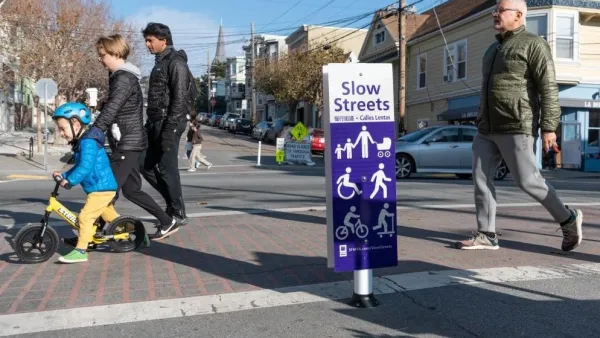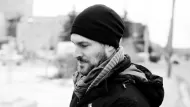The City of Calgary aims to restore 20 percent of its open space to increase biodiversity. Complex nature is—and needs to be seen as—foundational to our day-to-day lives, both for our well being, and the health of nature itself.

I left the city this past weekend to fell a tree in the foothills of the Rocky Mountains. Standing there with a saw in one hand, calf-deep in snow, I had forgotten how good that kind of nature feels" its expanse, its diversity, its varying topography. Indeed I don't get out there often enough I thought. And then I returned to the city.
I'm not feeling city nature these days. Maybe it's the weather. It's not technically winter yet, but it looks like it (on my cycle to work, it indeed feels like it). The urban moraine of ice-fused gravel has been deposited and formed by automobiles along curb lanes; streets are de-icer white; lawns are dead-grass brown. Perhaps that's just the winter commute aesthetic.
But then I leave the city and chop down a tree for Christmas ornaments and feel the nature thing. In this kind of nature I feel recharged. I take some deep breaths between saw strokes, drag a tree a few hundred metres, this is feeling nature. Then I drive back into the city and the scene changes, the diversity of nature flattens out, the topography flattens out, the feeling of nature changes. I feel changed.
Trekking into one of the large nature reserves helps augment the gravel-coated winter gloom. Cycling past mature trees that line some city streets helps, though big, thick, tall, densely packed ones are a rare phenomenon here. Unless intentionally planted, they're mostly confined to the ravines. As is typical of most cities, the nature here is not indicative of its place on the natural landscape. It's the urban universal nature: predominantly turfgrass and city-tolerant trees. It is, if you will, not complex.
The nature we put back into the city after we've stripped and graded it away to put up a housing typology and requisite servicing, tends to be ten centimetres deep, with grass rolled-out over it. Some trees are plugged into pits. It's nature, but not good nature (if I could be so blunt). It's not ecologically complex; it's not biologically diverse—the type of nature that, according to research, supports us.
The type of nature delivered rolled-up on a flat bed truck to cover bare soil is actually a good example of troubled nature. It requires a massive amount of energy input. It's an addict, addicted to our inputs of mowing and fertilizing and weeding and watering and tending, and the carbon pulses associated with these activities. This type of nature has a place in cities—as kicking a ball has a place in cities—but it's not the type of nature that should be prioritized, which a stroll through most neighbourhoods indicates.
On changing priorities, The City of Calgary has a goal in place to naturalize its inventory of undervalued turfgrass. Through land management practices, degraded habitat will be restored to increase biodiversity. As stated in the Council-approved 10-year biodiversity strategic plan, the target is to, "restore 20 per cent of Calgary’s current open space to increase biodiversity." The document recognizes the important role standard-operating-procedure lawns have in an urban context but aims to balance—and perhaps integrate—recreation/traditional aesthetic wishes with conservation and ecological needs.
The strategic plan recognizes that there is a wealth of human health benefits that stem from being in more complex nature. The classic case study revealed that post-surgery patients recovered faster when pondering the trees in the hospital’s courtyard rather than the brick wall from the other view. But it isn't just simply seeing green that is needed for our wellbeing, but rather an array of greens (and blue and brown and all the colours of nature). Research is pointing at the need for complex nature in our day-to-day lives. Fuller et al. demonstrate that daily contact with biodiversity has measurable wellbeing impacts: "The degree of psychological benefit was positively related to species richness of plants." Some of these benefits are stress level reduction, increased concentration levels, anxiety reduction and a strengthening of social unity.
Robert Bothwell writes in a Penguin History of Canada, "In ancient culture people saw themselves as part of nature. This contrasts the modern view where nature is usually regarded as an external arena for problem solving." This arena is even more apparent in cities, where we tend not to work with nature but rather allocate it to areas not appropriate for putting up houses.
Complex nature needs to be central to our lives; we need to be in its arena. The UN Convention on Biological diversity internationally declared its role in clear air and water, soil formation and stability, food production, and disease control among other foundational provisions. The Convention implores local action, as it is in the city where we most often experience nature. Cities need to be more complex, native plant complexity, wildlife habitat complexity, natural topographical complexity.
Conserving and establishing complex nature in cities isn't just an operation of beautification. It's fundamental to who we are as a predominantly urban species. The simple kind of nature apposes part of what it means to be well. I'm reminded of this when I chop down a tree and return to the city and climb on my bike in the morning and cycle along adjacent to the urban moraine.
Connect with Steven on Twitter @stevenpsnell or Facebook stevenpsnell. Download his novel, Clear Running Water, at Smashwords.

Planetizen Federal Action Tracker
A weekly monitor of how Trump’s orders and actions are impacting planners and planning in America.

Maui's Vacation Rental Debate Turns Ugly
Verbal attacks, misinformation campaigns and fistfights plague a high-stakes debate to convert thousands of vacation rentals into long-term housing.

San Francisco Suspends Traffic Calming Amidst Record Deaths
Citing “a challenging fiscal landscape,” the city will cease the program on the heels of 42 traffic deaths, including 24 pedestrians.

Defunct Pittsburgh Power Plant to Become Residential Tower
A decommissioned steam heat plant will be redeveloped into almost 100 affordable housing units.

Trump Prompts Restructuring of Transportation Research Board in “Unprecedented Overreach”
The TRB has eliminated more than half of its committees including those focused on climate, equity, and cities.

Amtrak Rolls Out New Orleans to Alabama “Mardi Gras” Train
The new service will operate morning and evening departures between Mobile and New Orleans.
Urban Design for Planners 1: Software Tools
This six-course series explores essential urban design concepts using open source software and equips planners with the tools they need to participate fully in the urban design process.
Planning for Universal Design
Learn the tools for implementing Universal Design in planning regulations.
Heyer Gruel & Associates PA
JM Goldson LLC
Custer County Colorado
City of Camden Redevelopment Agency
City of Astoria
Transportation Research & Education Center (TREC) at Portland State University
Jefferson Parish Government
Camden Redevelopment Agency
City of Claremont






























